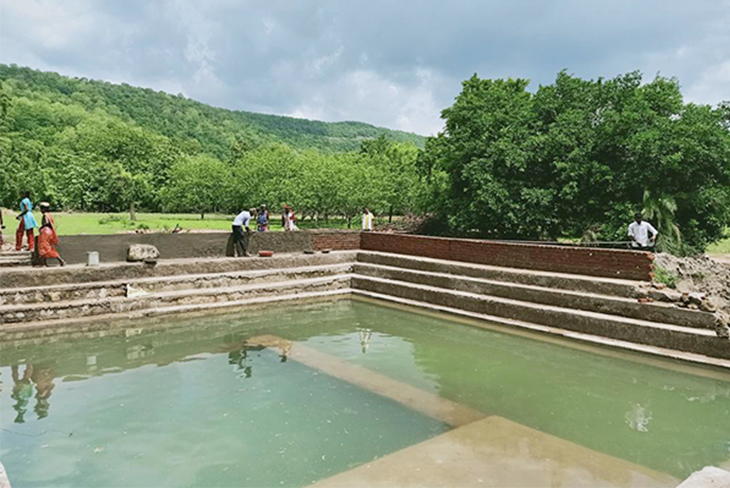ActionAid Association, with support from IFCI Limited, has been working intensively in six villages of Deoghar district of Jharkhand and five villages of Nuapada district of Odisha to develop drought-resilience among communities. Implemented in partnership with Sambad in Jharkhand and Social Awareness Institute (SAI) in Odisha, this initiative was started to address the issue of water crisis in the intervention villages through water conservation measures and to tackle the problem of depleting ground and surface water and to ensure food and livelihood security for the marginalized communities.
Renovation of a total of 11 traditional water harvesting structures was undertaken as part of this initiative – six in Jharkhand and five in Odisha. Village-level meetings and transect walks with community members were conducted to discuss the local conditions (including existing irrigation and drinking water sources and practices), and to identify the sites for renovation and to design the structures accordingly. Other activities conducted under this IFCI-supported intervention included revival of traditional cultivation methods and seeds, training of farmers, plantation on embankments and soil erosion control measures. Furthermore, through water literacy programmes, street plays and wall paintings, efforts were made towards orienting communities on climate change, drought and the need for water conservation and environmental sustainability, and the various ways to do it. Through the formation of village-level Jal Sathi committees and renovation committees, community participation was ensured in all processes, including on how to execute the various activities and their overall implementation.
As a result of this initiative, the impact of drought in the intervention villages has been brought under control to a large extent. Rainwater conservation in the revived water harvesting structures has led to groundwater recharge. You would be pleased to learn that irrigation facilities have been created for nearly 250 acres of land in Jharkhand and 155 acres in Odisha. This would not just increase agricultural production and lead to food security but also generate employment and help in containing migration. This initiative has also helped in minimizing shortage of water for drinking and bathing purposes in these villages. Water availability close to the habitations has also helped ease the burden of women and girls who had to earlier walk long distances every day to fetch water for their families. Besides, hundreds of trees have been planted on the embankments of water harvesting structures and pond embankments have been used for vegetable cultivation, thereby providing food and nutrition security to several households. Soil erosion has also been successfully arrested over several acres of farmland.
We are glad to share that this initiative has also helped strengthen the concept of community participation and decision-making. Community members are now taking leadership in their villages to strengthen Gram Sabhas and are linking their demands to government schemes such as MGNREGA (Mahatma Gandhi National Rural Employment Guarantee Act) for water conservation projects.

